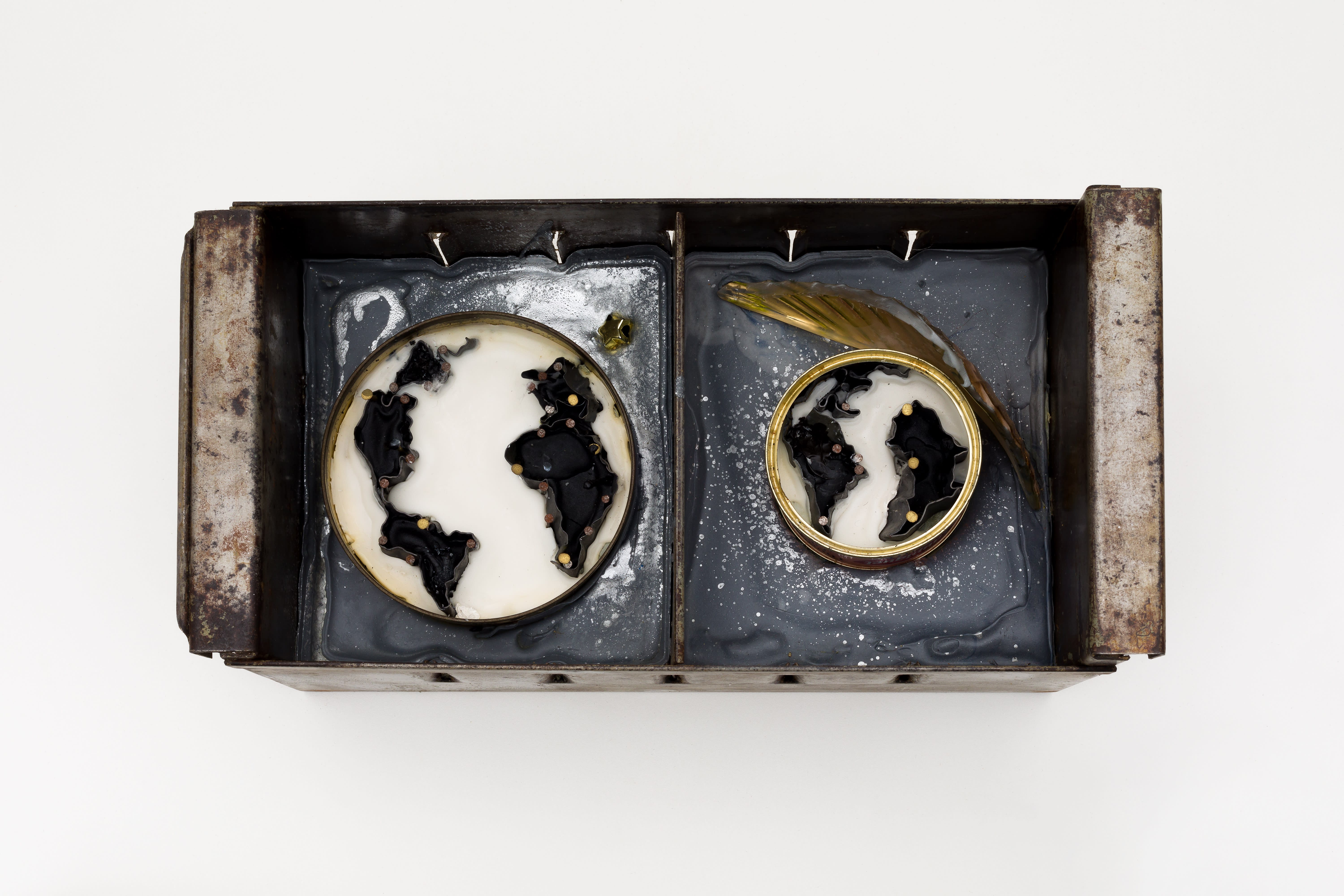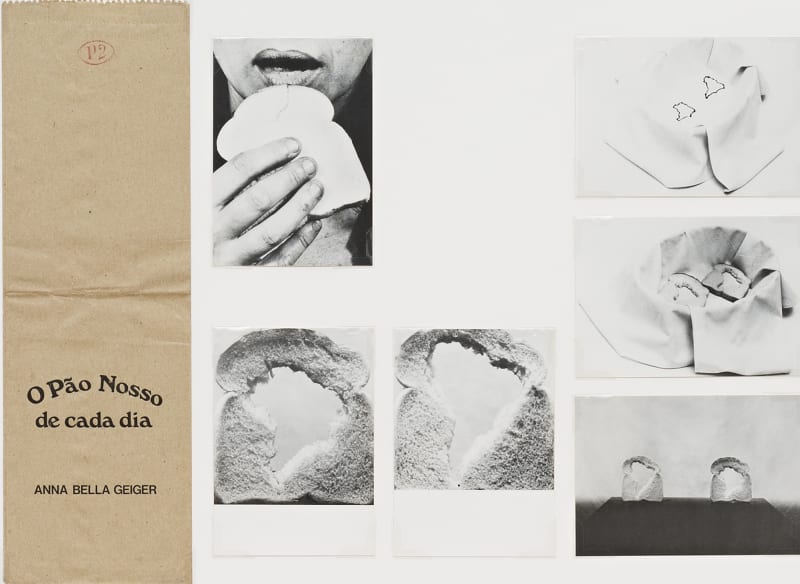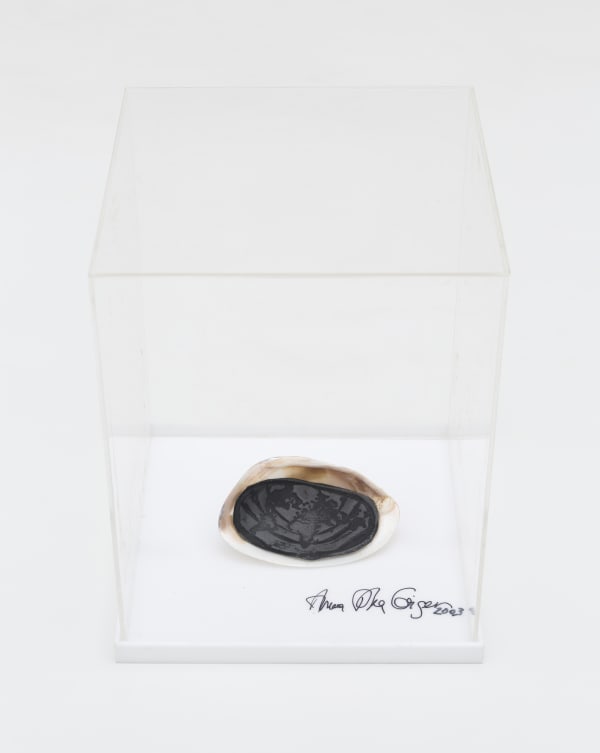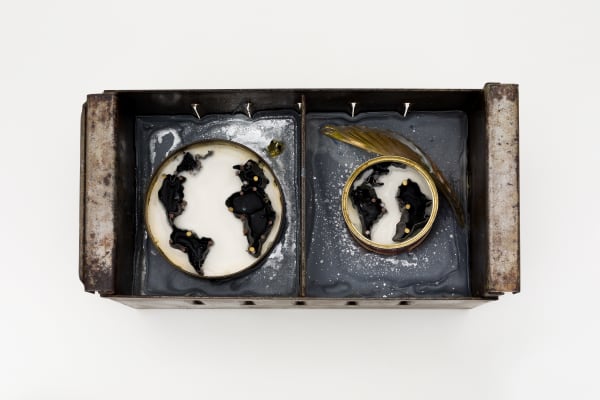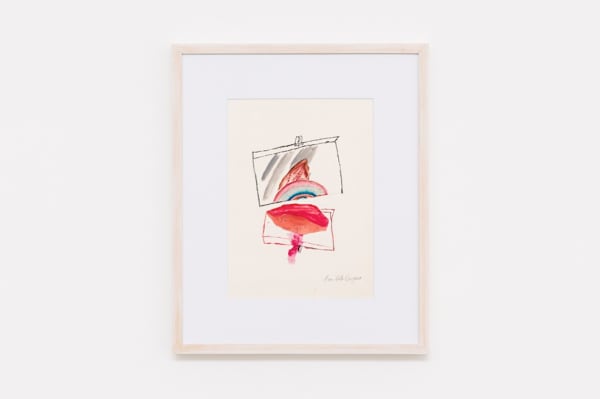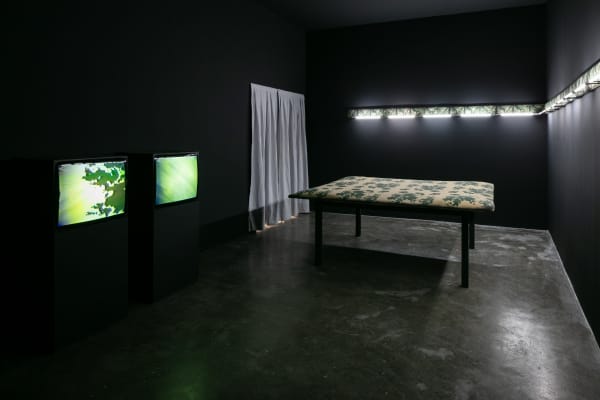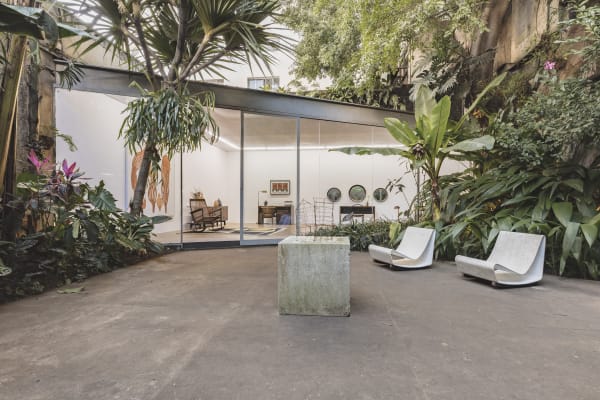My attitude towards art is conceptual or ideological. I don’t run away from it.
– Anna Bella Geiger
Anna Bella Geiger is widely acknowledged as one of the most important artists working in Brazil today. A pioneer of video art in the country, she was also one of the great exponents of the first generation of Latin American conceptual artists. Her trajectory, continuously marked by ruptures and a multiplicity of themes and methods, began in the 1950s and early 1960s. Chiefly linked to informal abstractionism, these early works prompted an improvised and spontaneous practice with a rigorous concern for form.
Later in her career, she dedicated herself to metal engravings and the use of gouache, which activated her notorious Visceral Phase and was inspired by the movement known as Nova Figuração (New Figuration). Composed of cut metal plates, the images from this period blend discussions of engraving techniques with the organic reality of the human body to reference geopolitical representations, as though the fragmentation of our bodily parts could give rise to possible maps. At this point, the study of cartography became a definitive field of interest for the artist, problematizing notions of territory, borders, and cultural hegemony.
By the 1970s, Geiger’s production assumed an experimental tone, which the artist recognized as the only possible mode of art-making – breaking with the orientations of the modern period and radically exploring contemporary practices. Beginning to adopt methods such as photomontage, photogravure, photocopy, and video, her thematic ambitions expanded in equal measure, resulting in pieces committed to critical rhetoric and strong political connotations. During this time, the artist also focused her dialogue on anthropology and the study of the image, developing her “geo-poetry” and anticipating crucial points of contention in public debate, both globally and within Brazil.
From the early 1990s, Geiger further expanded her material repertoire. The distinctive series Fronteiriços [Borderlines], where map formations and elements, such as orthogonal lines and diagrams, appear inside old iron archive drawers filled with wax, stands out within this period. Metaphors of knowledge and memory, the boxes, dismantled from their map cabinets, refer to the fluidity with which circuits allow for the diffusion and crystallization of certain objects and relationships, fixing them onto the surface of a social imaginary. Today, Geiger continues to work with freshness, producing collages using a variety of media that revisit and explore her main themes.
Anna Bella Geiger (b. 1933, Rio de Janeiro, Brazil) lives and works in Rio de Janeiro.
Throughout more than seven decades, Geiger extensively presented her work in the most prominentmuseums in solo exhibitions such as Anna Bella Geiger – Entre o Relevo e o Recorte, SESC Copacabana, Rio de Janeiro (2024); Circumambulatio, Museu de Arte Contemporânea da Universidade de São Paulo (MAC-USP), São Paulo (2024); Anna Bella Geiger – 70 anos de arte, Universidade Estadual do Rio de Janeiro, Rio de Janeiro (2023); Brasil nativo/Brasil alienígena, Frans Hals Museum, Haarlem (2022); Another Energy, Mori Art Museum, Tokyo (2022); Brasil nativo/Brasil alienígena, Museu de Arte de São Paulo Assis Chateaubriand (MASP), São Paulo (2019); and group exhibitions such as Era uma vez visões do céu e da terra, Pinacoteca do Estado de São Paulo, São Paulo (2024); Where we speak, Kunstverein Bielefeld, Bielefeld (2024); Radical Software: Women, Art & Computing 1960-1991, ContemporaryArt Museum of Luzembourg (MUDAM), Luxembourg (2024); This too is a map, 12th Seoul MediacityBiennale, Seoul (2023); Between Us and the Others: Together Apart, IV Bienal Sur, Madrid (2023); Biennial SESC VideoBrasil, São Paulo (2023); The Seventh Continent, 16th Istanbul Biennial, Istanbul (2019); Radical Women, Latin American Art, Brooklyn Museum, New York (2019); A View from Buenos Aires, Tate Modern, London (2019); Radical Women, Latin American Art, Brooklyn Museum, New York(2018); Verboamérica, MALBA, Buenos Aires (2017); Histórias da Sexualidade, Museu de Arte de São Paulo Assis Chateaubriand (MASP), São Paulo (2018); Transmissions: Art in Eastern Europe and Latin America, 1960-1980, Museum of Modern Art (MoMA), New York (2015); Grito de Libertad, 1st Bienal Internacional de Assunção, Paraguay (2015); Anna Bella Geiger and her students, Videos, Ciclo: On the Edge: Brazilian Film Experiments of the 1960s and Early 1970s, Museum of Modern Art (MoMA), New York (2014); América Latina Photographs 1960–2013, Foundation Cartier, Paris (2013); Vidéo Vintage, Centre Pompidou, Paris (2012); Modern Women Single Channel 5 artists, MoMA PS1,New York (2011); ESPAI de LECTURA 1: BRASIL, MACBA, Barcelona (2009); First Generation: Arte e Imagem em Movimento, Museo Centro de Arte Reina Sofía, Madrid (2006); II Biennial of Liverpool, Liverpool (2000); 5th Biennale Internationale de Photographie, Liège (2000); 6th Cuenca Biennial, Cuenca (1998); 24th São Paulo Biennial, São Paulo (1998); 1st Bienal do Mercosul, Porto Alegre (1997); 20th São Paulo Biennial, São Paulo (1989); 18th São Paulo Biennial, São Paulo (1985); 16th São Paulo Biennial, São Paulo (1981); 39th Venice Biennale, Venice, Italy; Biennale du Jeune, Paris, France (1967); 9th São Paulo Biennial, São Paulo (1967); 8th São Paulo Biennial, São Paulo (1965); 7th São Paulo Biennial, São Paulo (1963); 6th São Paulo Biennial, São Paulo (1961).
Geiger’s work features in collections such as Museum of Modern Art, New York; Centre Pompidou, Paris; Victoria & Albert Museum, London; Getty Collection, Los Angeles; Fogg Collection, Cambridge; Public Library of New York, New York; Biblioteca Nacional do Rio de Janeiro, Rio de Janeiro; MACBA, Barcelona; Museu de Arte Moderna de São Paulo (MAM – SP), São Paulo; Museu de Arte Contemporânea da Universidade de São Paulo (MAC – USP), São Paulo; MUHKA, Antwerp; Museo Centro de Arte Reina, Madrid, among others.
-
 EW18 com a teoria do Black Hole e pés descalços, from the series Macios, 2018
EW18 com a teoria do Black Hole e pés descalços, from the series Macios, 2018 -
 Intolerância-migrações, 2017
Intolerância-migrações, 2017 -
 OHREN ATHENA COM ORBIS DESCRIPTIO, from the series Fronteiriços, 2017
OHREN ATHENA COM ORBIS DESCRIPTIO, from the series Fronteiriços, 2017 -
 Orbis Descriptio com África & Middle Orient, from the series Fronteiriços, 2016
Orbis Descriptio com África & Middle Orient, from the series Fronteiriços, 2016 -
 Na outra margem del rio Amazonas, da série Local da ação, 2006
Na outra margem del rio Amazonas, da série Local da ação, 2006 -
 Sobre Nácar, 2003
Sobre Nácar, 2003 -
 Orbis Descriptio, 1999
Orbis Descriptio, 1999 -
 Orbis Descriptio com Américas e dois ventos, 1999
Orbis Descriptio com Américas e dois ventos, 1999 -
 Orbis Descriptio com Venus - A História da escultura ocidental, da série Fronteiriços, 1996
Orbis Descriptio com Venus - A História da escultura ocidental, da série Fronteiriços, 1996 -
 Orbis Descriptio - El Mundo Hoy, 1995-2018
Orbis Descriptio - El Mundo Hoy, 1995-2018 -
 Local de ação 1500/1995, 1995
Local de ação 1500/1995, 1995 -
 Equações, da série De Rerum Artibus, 1978
Equações, da série De Rerum Artibus, 1978 -
 Equações, da série De Rerum Artibus, 1978
Equações, da série De Rerum Artibus, 1978 -
 Brasil nativo - Brasil alienígena, 1976-1977
Brasil nativo - Brasil alienígena, 1976-1977 -
 Sem título, 1969
Sem título, 1969 -
 Visceral, 1969
Visceral, 1969 -
 Carne na tábua, 1968
Carne na tábua, 1968 -
 Carne na tábua, 1968
Carne na tábua, 1968 -
 Garganta, 1967
Garganta, 1967 -
 Brasil nativo / Brasil alienígena, 1976-1977
Brasil nativo / Brasil alienígena, 1976-1977 -
 Brasil nativo / Brasil alienígena, 1976-1977
Brasil nativo / Brasil alienígena, 1976-1977
-
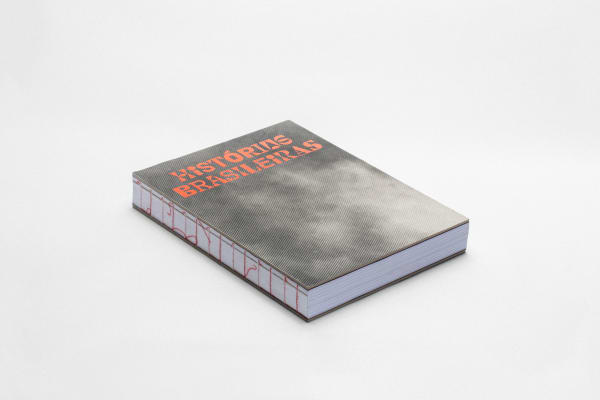
Histórias brasileiras
MASP, 2022Hardcover, 404 pagesRead more
Publisher: MASP
Dimensions: 20,5 x 27,5 cm -
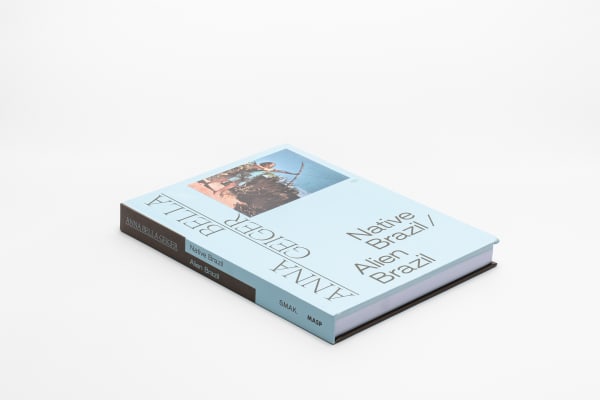
Native Brazil/Alien Brazil
Anna Bella Geiger Adriano Pedrosa; Bernardo Mosqueira; Estrella de Diego; Gabriela De Laurentiis; Philippe van Cauteren; Zanna Gilbert, 2020Hardcover, 287 pagesRead more
ISBN: 978-85-310-0081-2
Dimensions: 21 x 28 cm -
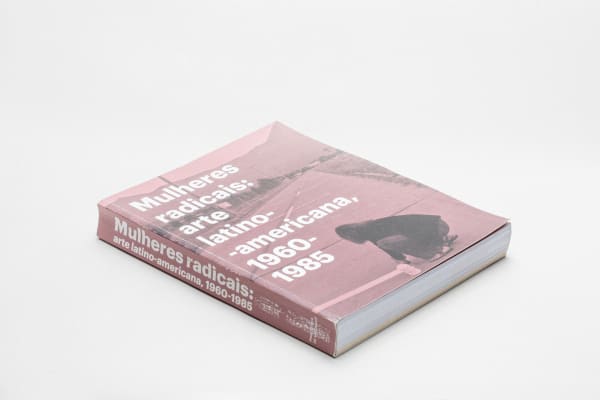
Mulheres radicais: arte latino-americana, 1965-1980
Cecilia Fajardo Hill , 2018Softcover, 384 pagesRead more
Publisher: Pinacoteca de São Paulo
ISBN: 902052
Dimensions: 3 × 23 × 28 cm -

Anna Bella Geiger - Physical And Human Geography
Anna Bella Geiger, 2017Hardcover, 244 pagesRead more
Publisher: La Casa Encendida
ISBN: 8469757385 -
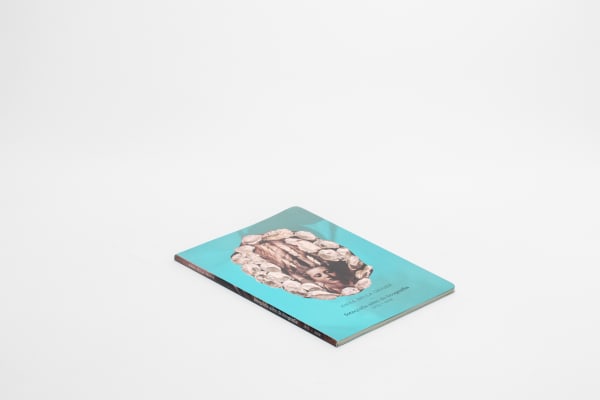
Anna Bella Geiger: fotografia além da fotografia: 1972-2008
Anna Bella Geiger Adolfo Montejo Navas, 2008BrochureRead more
Publisher: Caixa Cultural
ISBN: 2000003231475
Dimensions: 15 x 21 -
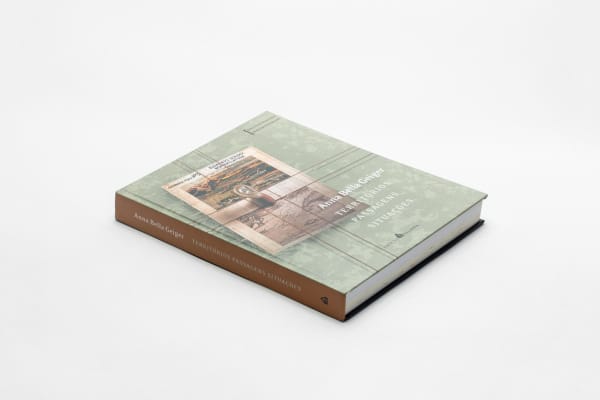
Anna Bella Geiger: territórios, passagens, situações
Adolfo Montejo Navas, 2007Hardcover, 356 pagesRead more
Publisher: Casa da Palavra
ISBN: 978-85-7734-040-8
Dimensions: 28,5 × 24 cm
Sign up to our newsletter to receive the latest updates about Anna Bella Geiger and the gallery
* denotes required fields
We will process the personal data you have supplied to communicate with you in accordance with our Privacy Policy. You can unsubscribe or change your preferences at any time by clicking the link in our emails.
